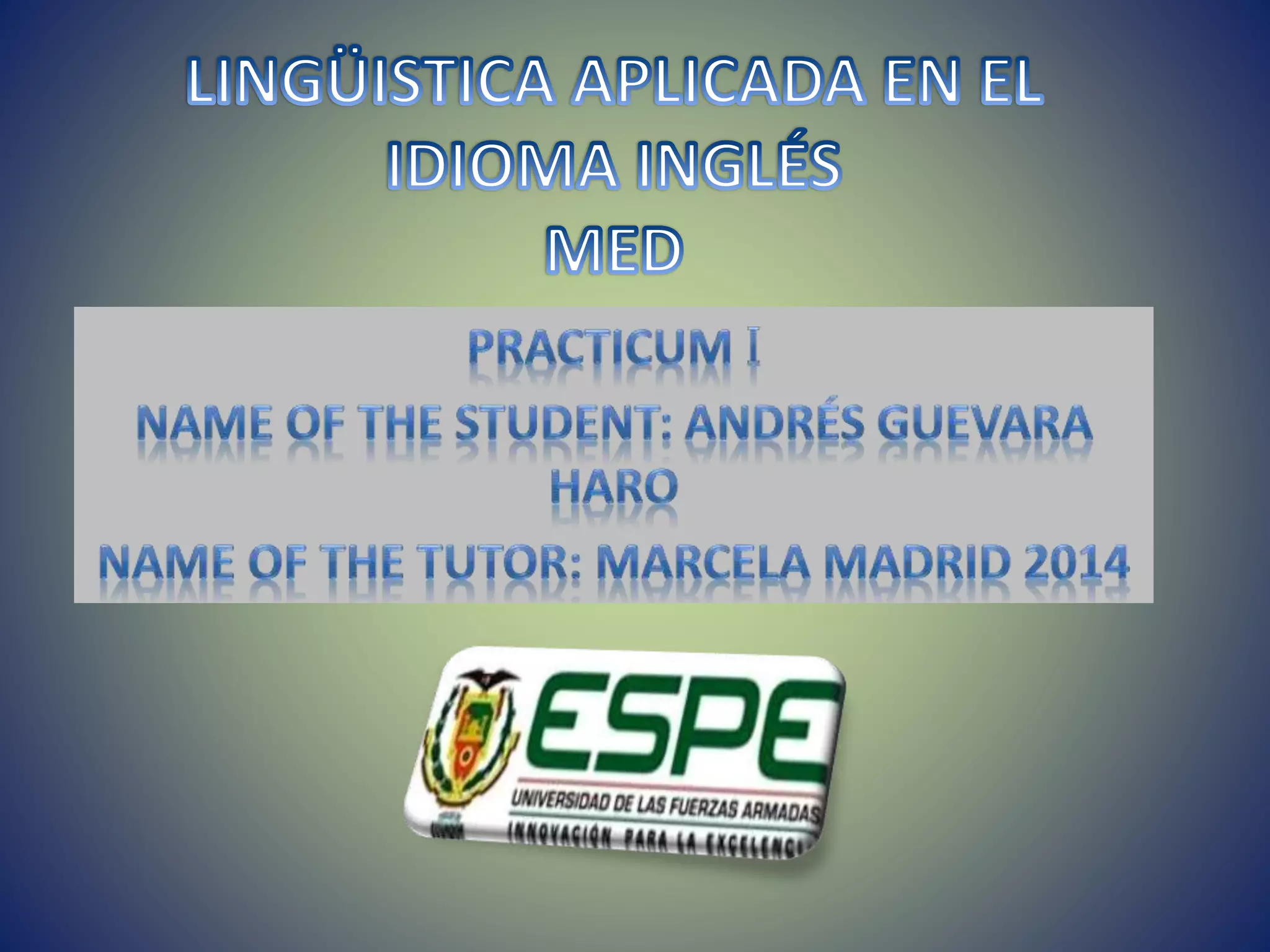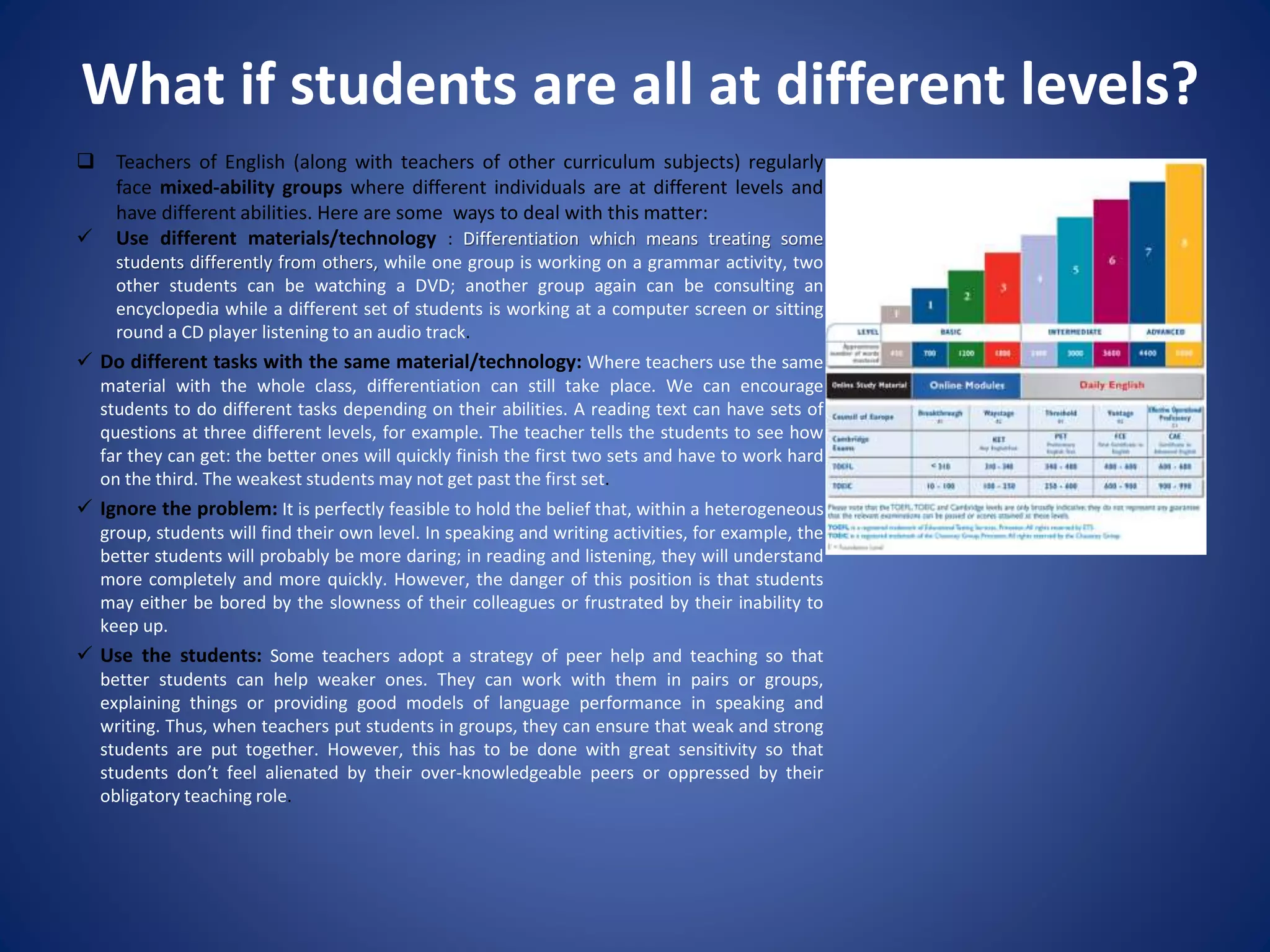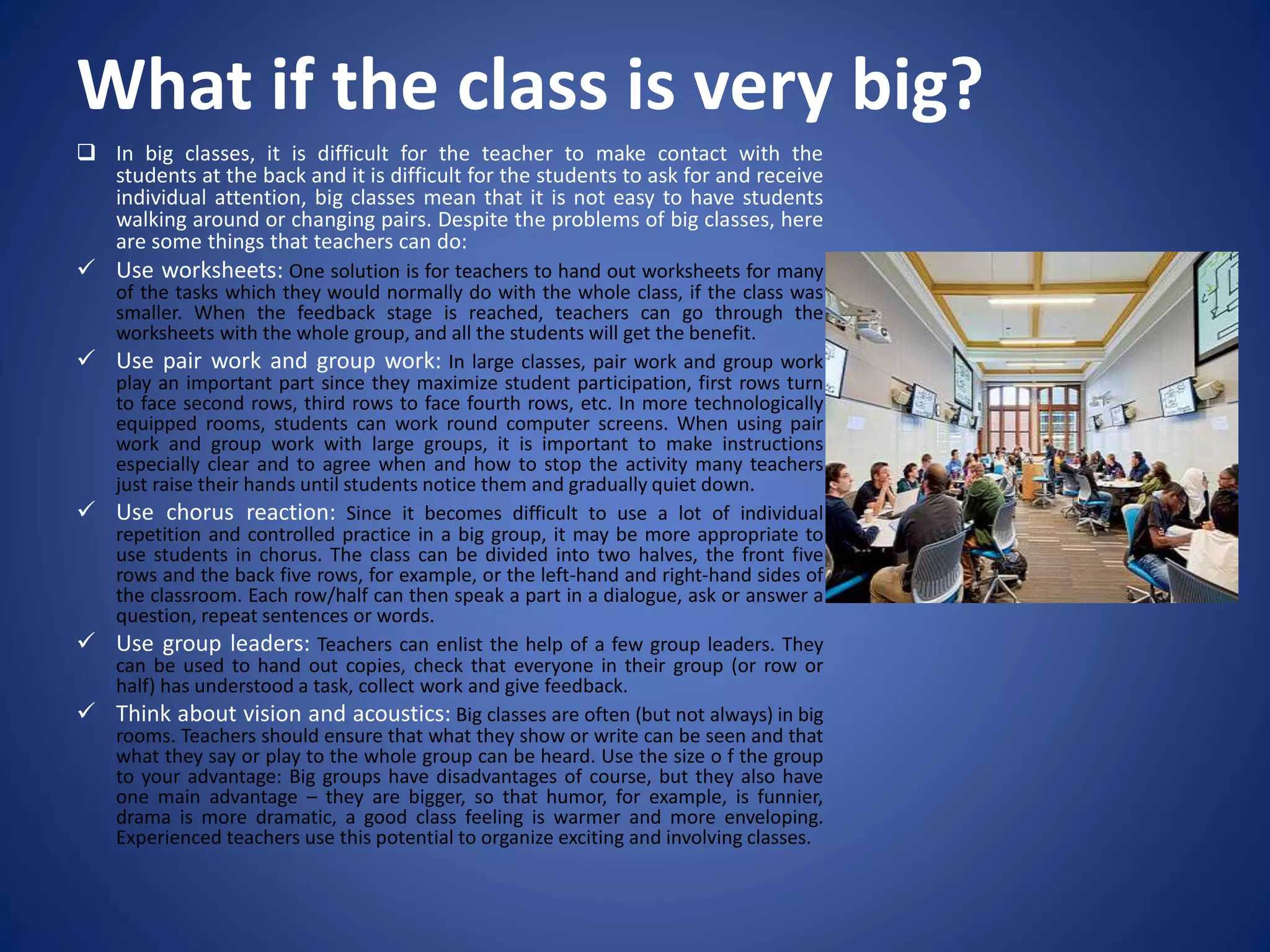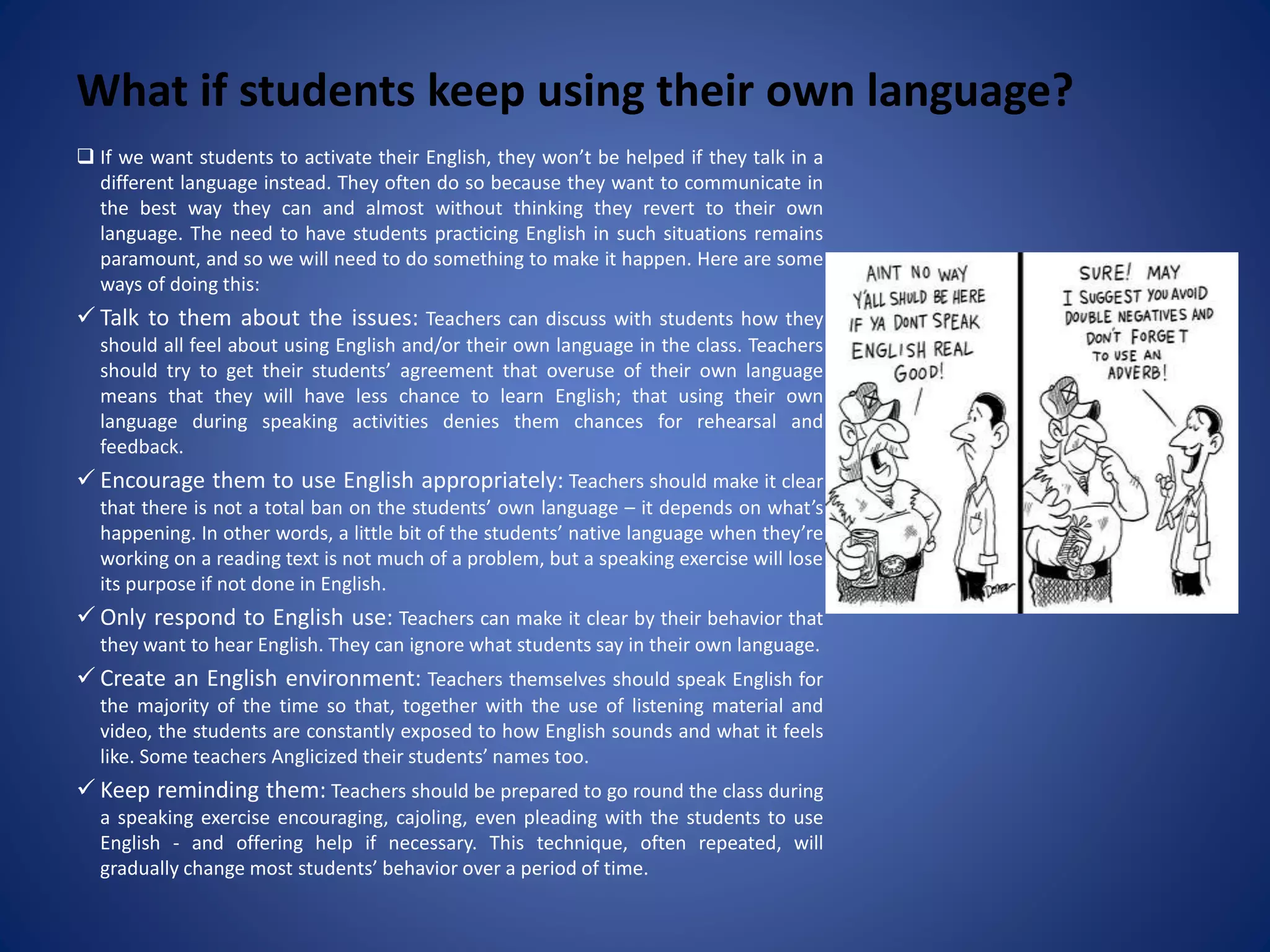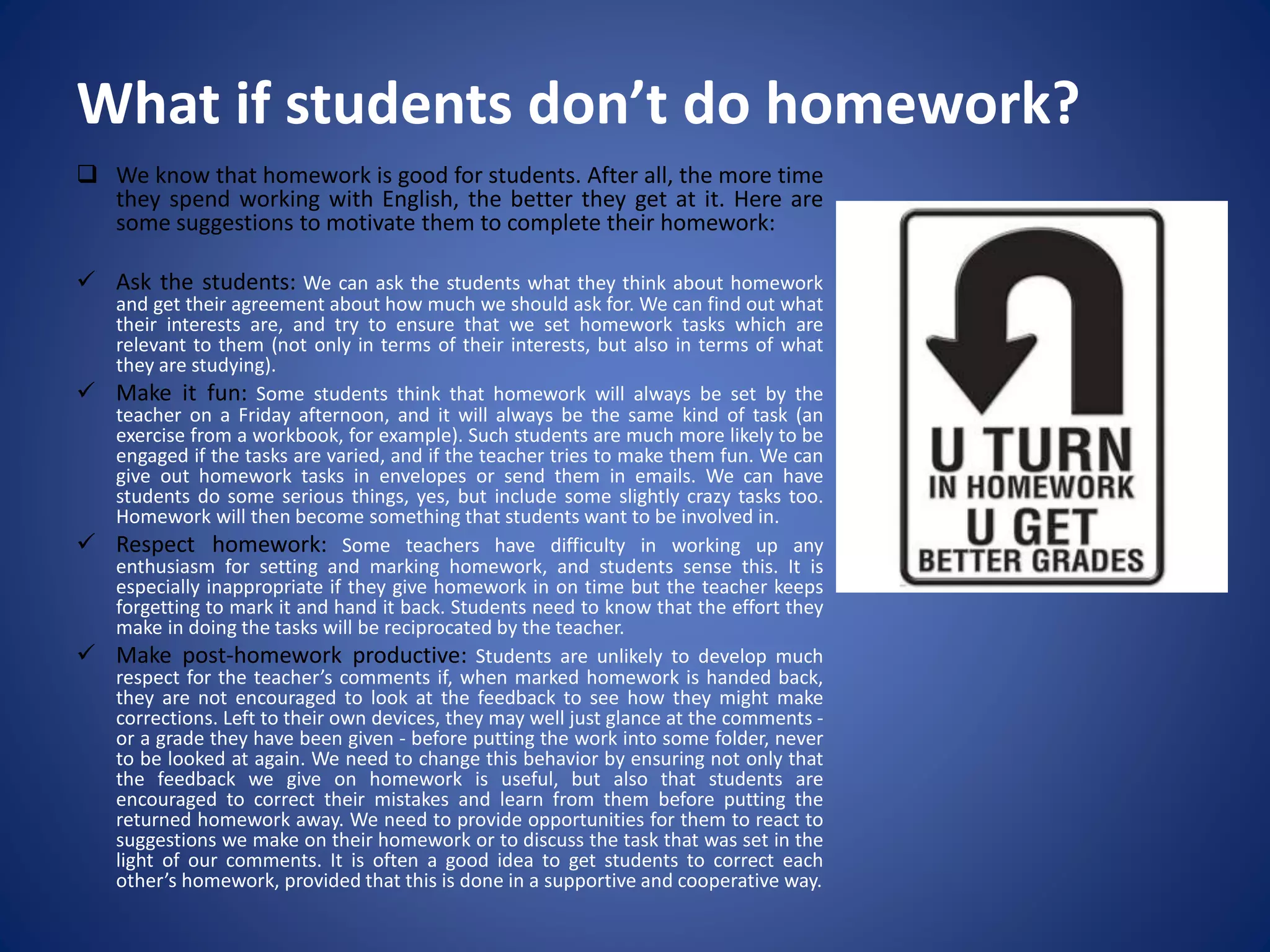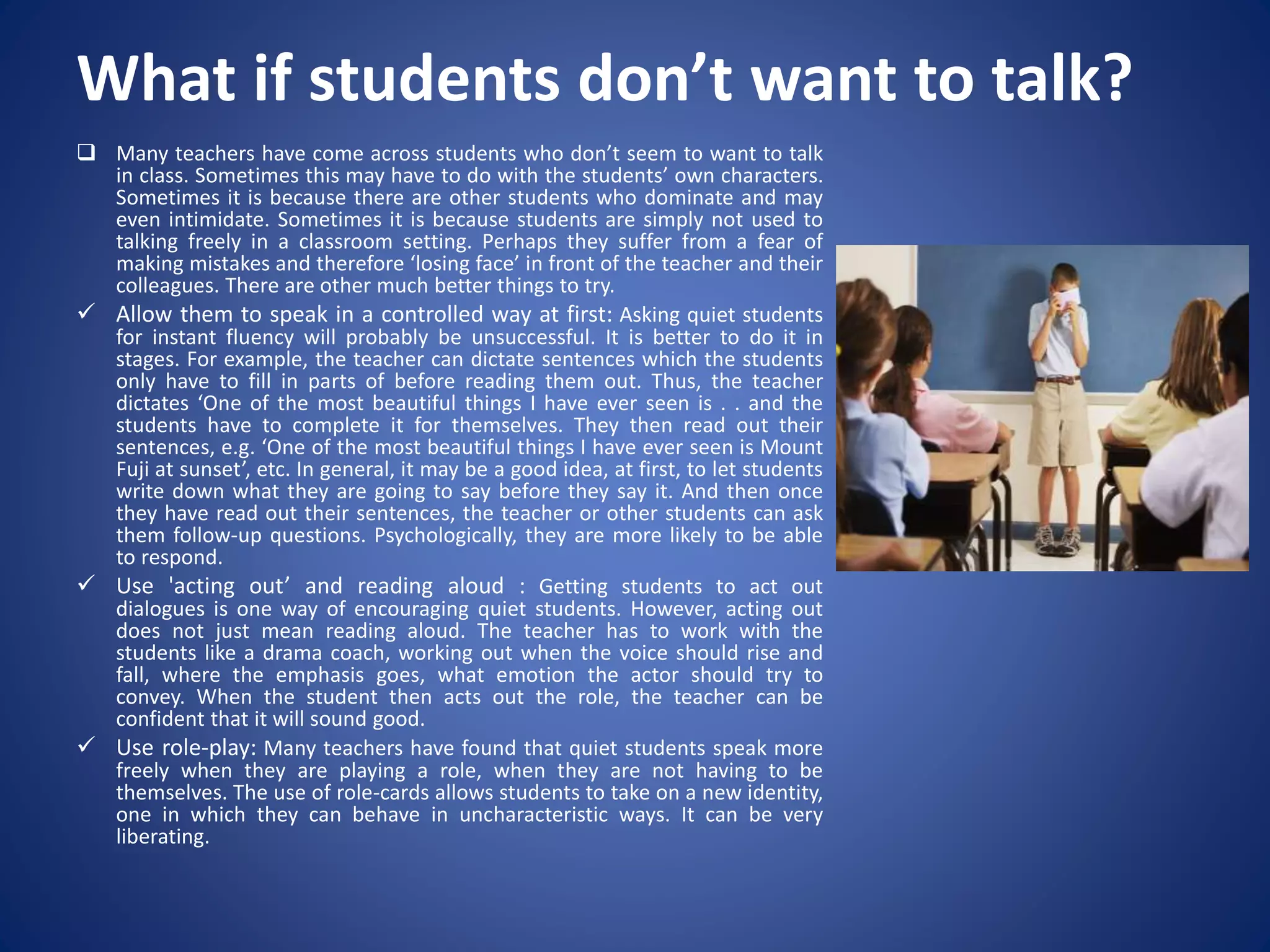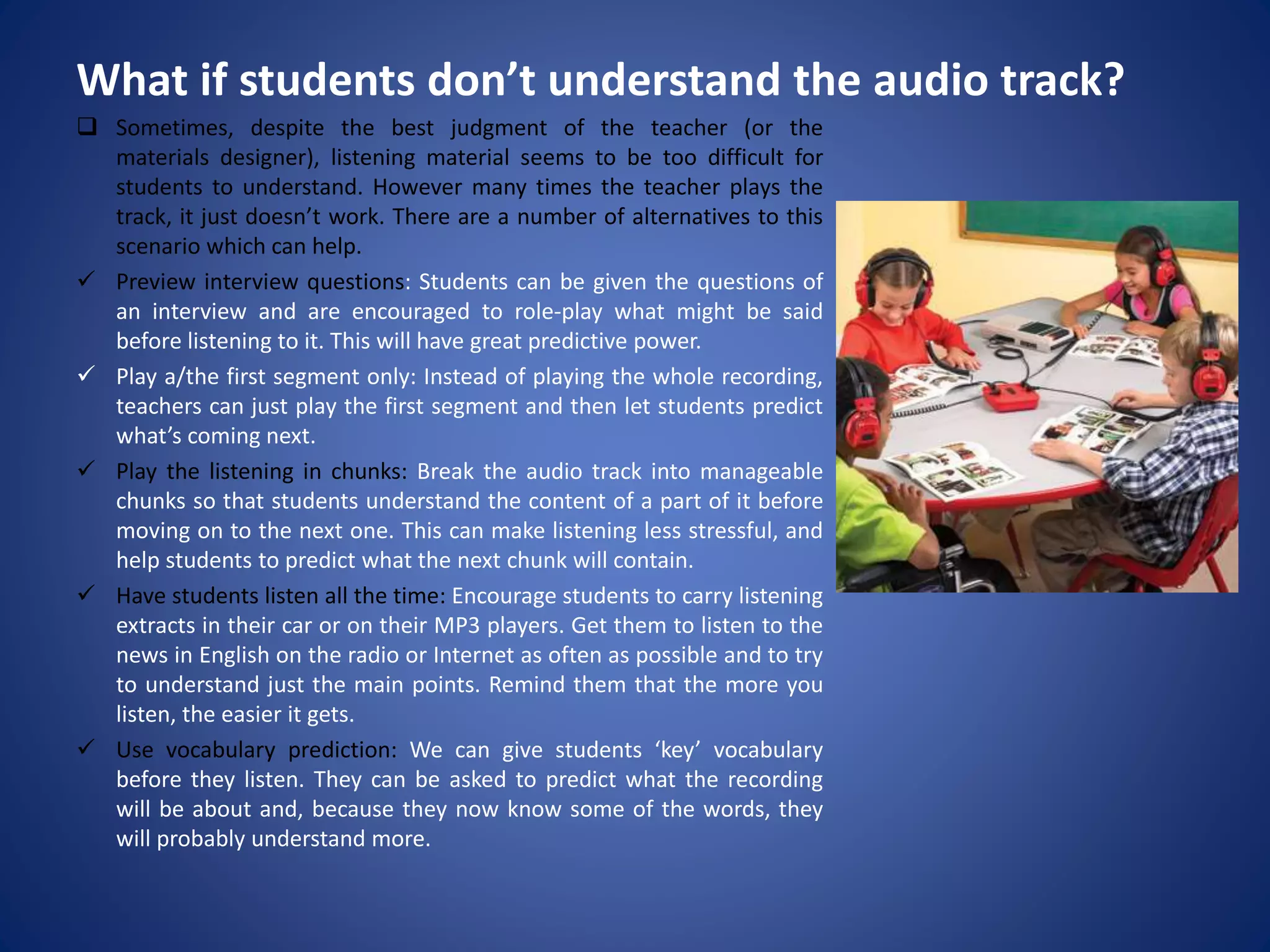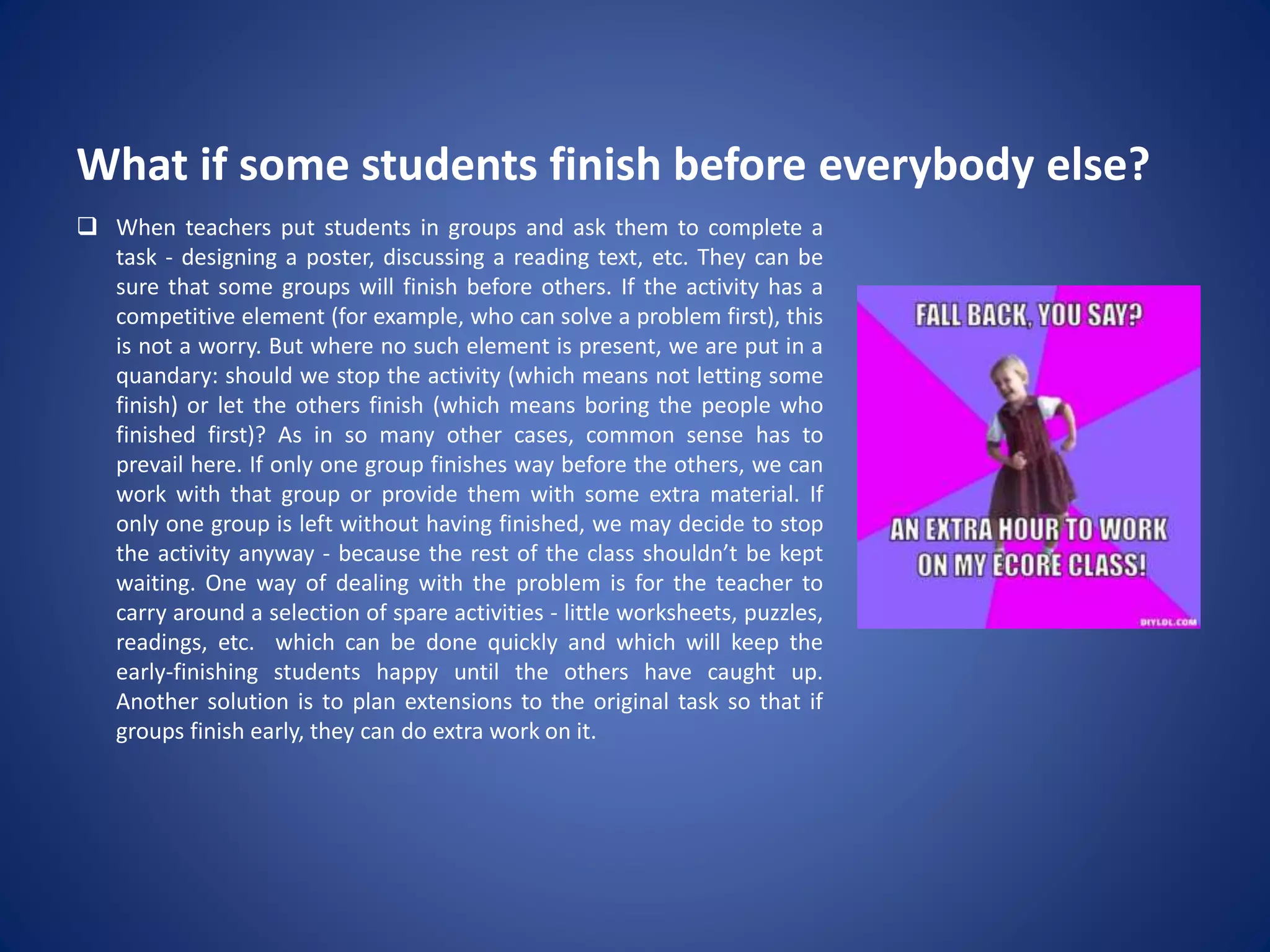The document provides strategies for teaching English effectively in mixed-ability and large classes, addressing common challenges such as students using their native language, not completing homework, and uncooperative behavior. It emphasizes the importance of differentiated instruction, engaging activities, and creating an English-speaking environment to enhance student participation and learning outcomes. Additionally, it suggests methods to encourage speaking and understanding during lessons, along with techniques to manage classroom behavior positively.

